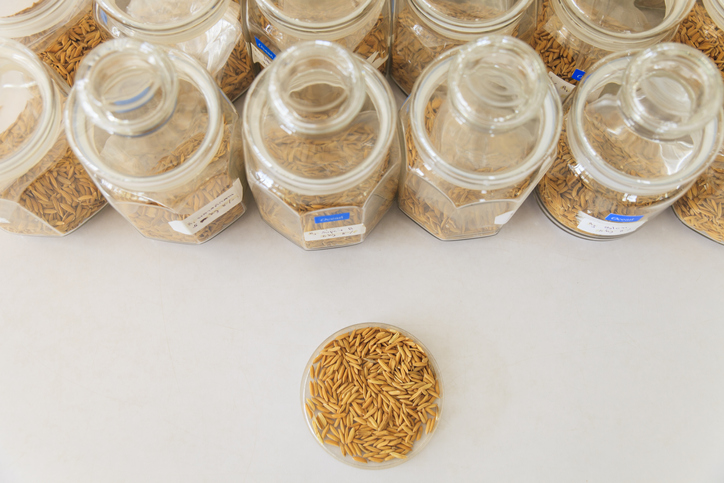
Experts Report a Multi-functional Genome Editing Method for Plants
June 24, 2020| |
Experts from the University of Chinese Academy of Sciences introduced a new technique called CRISPR simultaneous and wide-editing induced by a single system (SWISS), which allows multi-functional genome editing in plants. The detailed description of SWISS is published in Genome Biology.
In this new method, the RNA aptamers engineered in crRNA scaffold recruit their cognate binding proteins fused with cytidine deaminase and adenosine deaminase to Cas9 nickase target sites, leading to multiplexed base-editing. When paired sgRNAs are used, SWISS can cause insertions or deletions in addition to base editing. When this method was tested in rice, the mutants generated exhibited efficiencies of cytosine conversion of 25.5%, adenine conversion of 16.4%, indels of 52.7%, and simultaneous triple mutations of 7.3%.
Based on the tests, the SWISS system is a powerful tool for multi-functional genome editing in plants.
For more findings, read the open-access article at Genome Biology.
| |
You might also like:
- Pocket K No. 54: Plant Breeding Innovation: CRISPR-Cas9
- New Protocol: Genome Editing Using Rice Zygotes
- Inducible CRISPR-Cas9 Improves the Precision of Genome Editing in Rice
Biotech Updates is a weekly newsletter of ISAAA, a not-for-profit organization. It is distributed for free to over 22,000 subscribers worldwide to inform them about the key developments in biosciences, especially in biotechnology. Your support will help us in our mission to feed the world with knowledge. You can help by donating as little as $10.
-
See more articles:
-
News from Around the World
- Redefinition and Harmonization in Biotech Regulation Necessary, Experts Say
- Scientists Unlock Secrets of Teff, Ethiopia's Superfood
- GM Yeast Found to Effectively Control Tsetse Flies
- Oxitec's Friendly™ Mosquito Approval Published in Federal Register; Unanimous Approvals in State of Florida
- Sugar from GM Sugarcane at Par With That from Conventional Sugarcane
- Researchers Show How Fungal Pathogen Disables Plant Defense Mechanism
- UK Environment Secretary Proposes Use of Gene Editing to Decrease Farmers' Reliance on Pesticides
-
Research Highlights
- Researchers Pinpoint Genes Involved in Rice Blast Resistance
-
Plant
- Experts Report a Multi-functional Genome Editing Method for Plants
-
Health
- MIT-Engineered Peptide Targets COVID-19
-
Read the latest: - Biotech Updates (November 12, 2025)
- Gene Editing Supplement (October 29, 2025)
- Gene Drive Supplement (February 22, 2023)
-
Subscribe to BU: - Share
- Tweet

